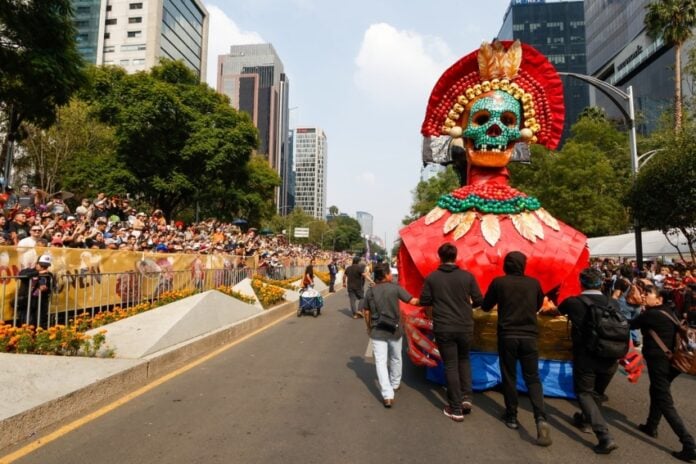Millions of tourists are expected to spend Day of the Dead in Mexico City this year, and for a city that houses more than 22 million people, that’s quite a number.
The capital attracts revelers for a variety of reasons: a well-connected airport, plenty of sightseeing, an outstanding culinary scene and, let’s be honest — Mexico City knows how to throw a party.
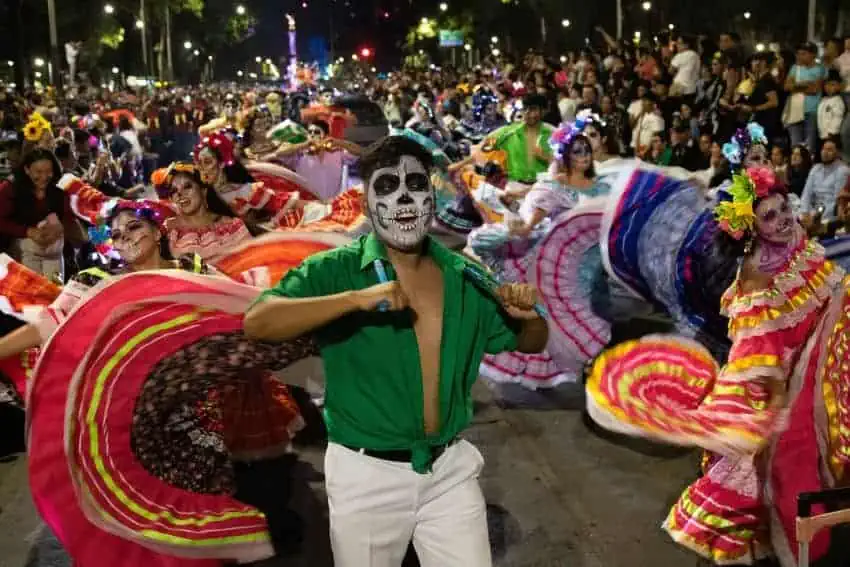
But in a country heavily stocked with traditional Pueblos Mágicos, is CDMX the best place in Mexico to spend Día de Muertos? It seems that millions think so – after all, the nation’s largest Day of the Dead parade marches down Paseo de la Reforma annually, not to mention the city stages a series of colossal sculptures in the Zócalo and a haunting La Llorona that wails before spectators in Xochimilco’s misty canals.
Coyoacán’s cobblestone streets are adorned with ofrendas (altars offered to the dead, usually loved ones, but not always). Condesa bakeries compete for the city’s best pan de muerto. Independent theaters stage dozens of Mictlan-themed performances depicting the Mexica (Aztec) underworld.
There is no lack of celebration during Day of the Dead in Mexico City; the question is, are these celebrations a bit, well, inauthentic?
The tradition’s intimate roots
A century ago, Day of the Dead throughout the country was largely a private affair: Families built small altars at home, purchased (or baked!) pan de muerto, and decorated their loved ones’ graves with flowers and candles. There were no megaofrendas, no giant processions and very few community events — though in Mexico City, the holiday was already gaining commercial ground. According to Columbia University anthropology professor Claudio Lomnitz, the 18th-century Day of the Dead market in CDMX was so large, it required government oversight.
Of course, an overcrowded tianguis selling holiday trinkets still pales in comparison to what we see today, and the evolution from intimate familial remembrance to a multimillion-peso-generating tourist attraction can be largely attributed to Mexico City’s aforementioned ability to throw a fine fiesta. Starting with food, of course.
Mexico City’s pan de muerto routes
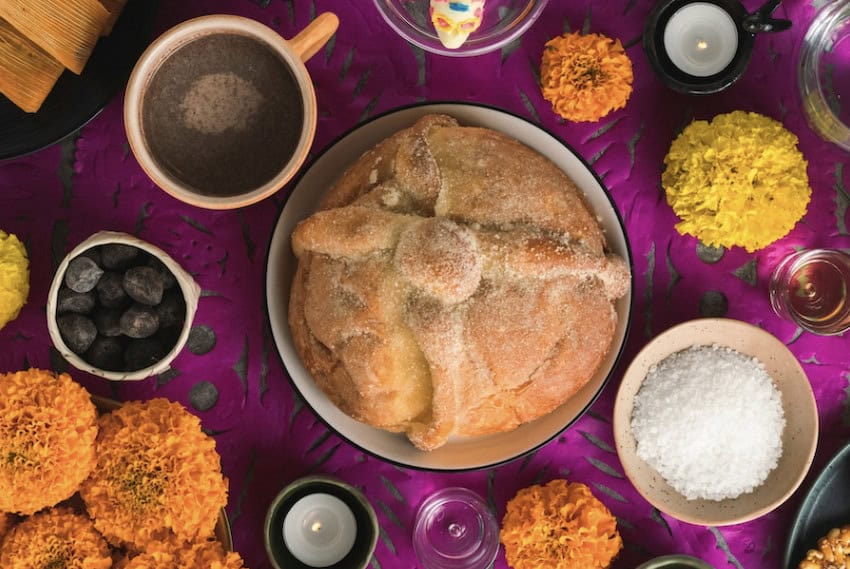
Don’t quote me on this, but I reckon if you ask your average visitor what their favorite part of Day of the Dead is, they’ll say the pan de muerto – i.e. bread of the dead. Historically, the sweet delight was a fusion of the bread introduced by the Spanish and the offering rituals of Mexico’s Indigenous peoples. Today, it’s far from a simple Day of the Dead food — it’s an opportunity for the city’s best bakeries to highlight their creativity by inventing all sorts of interesting variations. Within a few blocks’ radius of Mexico City’s bustling central zone — namely, the Condesa, Roma, Polanco and Juárez neighborhoods — you’ll find pan de muerto infused with lavender, injected with chocolate ganache or smothered in a seasonally appropriate pumpkin jam.
To identify the best of the best, social media influencers and the like started documenting — even ranking — pan de muerto from various bakeries. This turned into a trend known as the “Pan de Muerto Route” that is so popular with both locals and visitors that EcoBici introduced its own bike-friendly self-guided tour.
Contests large and small for the best bread of the dead take place all throughout town; Museo Kaluz has been hosting an annual Festival de Pan de Muerto since 2021 — Escandon’s La Maison Croffle won best bread in 2024.
Things to do in Mexico City for Day of the Dead
As far as Mexico City’s Day of the Dead activities, the options are seemingly endless. The calendar is dominated by multiple processions up Paseo de la Reforma — the three biggest being a celebration of catrinas, alebrijes and, lastly, the Grand Parade, which is, by far, the largest spectacle and — as many are surprised to find out — quite new.
The parade began in 2016, thanks to the 2015 James Bond film “Spectre,” which featured a fictional Day of the Dead parade in Mexico City that inspired the city government to put on its own version.
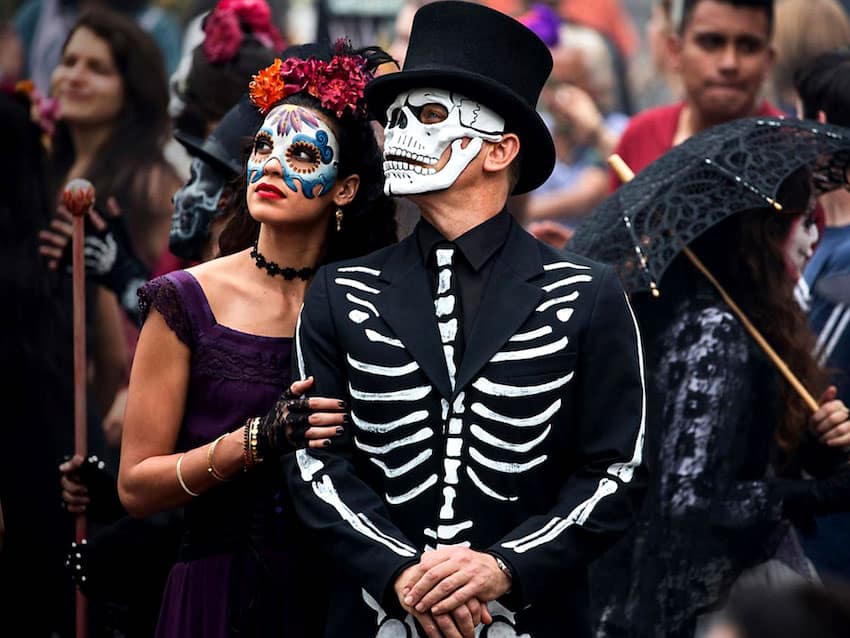
The Grand Parade currently hosts musical entertainment and up to 40 floats. Face painters and flower vendors are everywhere in the streets. There are altars and installations in parks, museums, shops and cafes. Restaurants, from Testal to Pujol, offer menus incorporating themed ingredients like mole and marigolds. Some revelers head to the Mixquic cemetery on November 2 to see the grave sites transformed by candles and traditional decor, though overtourism at the site — like crowds and traffic jams — is becoming a significant concern.
Where to go instead: Unique Day of the Dead towns in Mexico
Needless to say, if you’re seeking an experience that borders on the authentic, Mexico City may not be the place for you. Thankfully, there are numerous options in towns nearby. If you can follow some simple rules — asking permission before taking photos of people or grave sites, refraining from talking when everyone else is quiet, avoiding stepping on piles of flower petals in front of someone’s door and understanding that eating the bread off a public altar is forbidden — you’ll likely be welcomed with open arms.
Are the following options hidden and bona fide traditional? Perhaps not totally, but you are guaranteed a less-chaotic, more charming approach to arguably the most wonderful holiday in Mexico.
Atlixco, Puebla
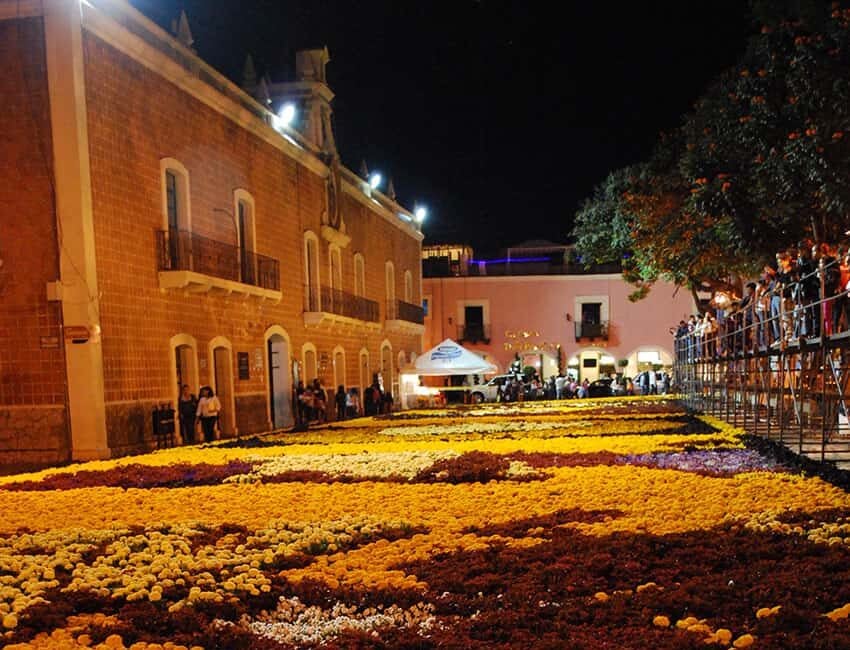
How to get there from CDMX: Take a direct bus from TAPO (La Terminal de Autobuses de Pasajeros de Oriente) or Taxqueña using the ADO or Estrella Roja bus companies. The eBus to Puebla will drop you a 30-minute Uber ride from Atlixco. Driving directly takes 2–3 hours.
Why you should go: Atlixco shines during Day of the Dead with flower carpets, marigold fields, and monumental catrina displays. Visitors can explore vibrant marigold fields, festive streets and small parades honoring local traditions.
Huaquechula, Puebla
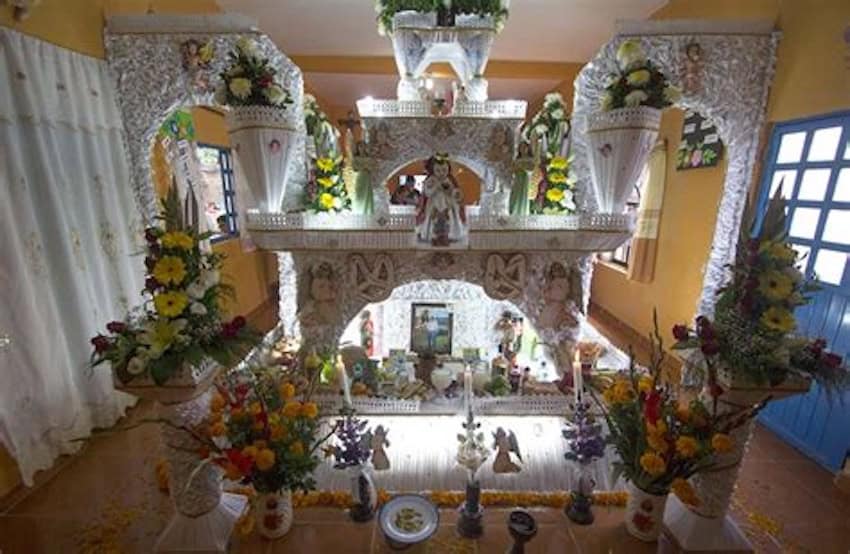
How to get there from CDMX: Take a bus or car from TAPO to Puebla, then transfer on local transport to Huaquechula; the trip usually takes 2–3.5 hours.
Why you should go: Huaquechula goes all out for the holiday. It’s known for its remarkable multitiered altars and open homes with family ofrendas, as well as a center square that’s full of decorations and entertainment and that features an open-air market.
Tepoztlán, Morelos
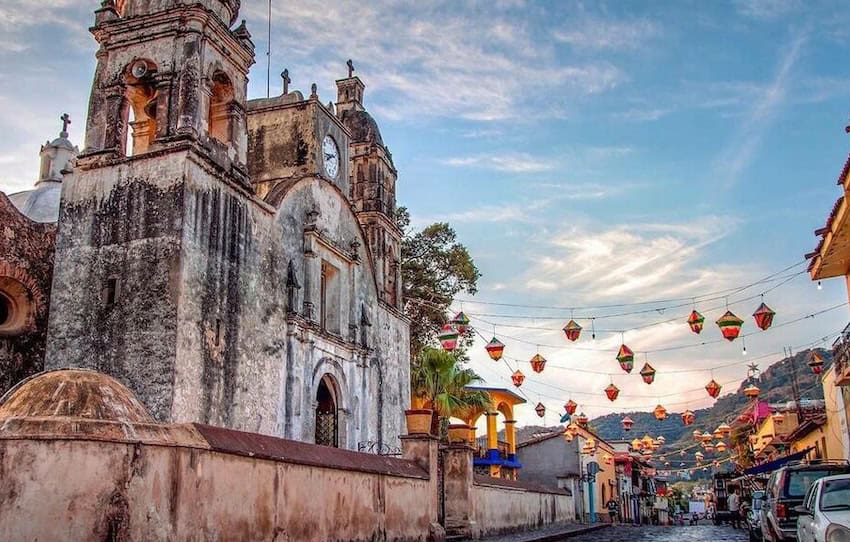
How to get there from CDMX: Direct passenger vans and buses leave frequently from Terminal Taxqueña; road travel takes about 1.5 hours.
Why you should go: The Tepoztlán Day of the Dead scene is considered a spiritual and cozy affair, featuring mystical candlelit cemetery vigils and Indigenous rituals amid mountain backdrops, plus vibrant lanterns and local hospitality.
Huamantla, Tlaxcala
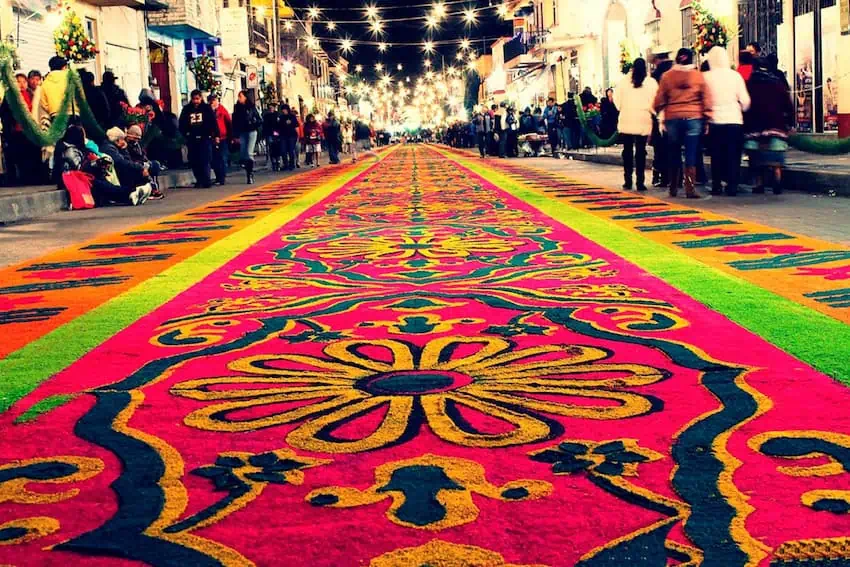
How to get there from CDMX: ADO buses from TAPO to Huamantla take 2–2.5 hours.
Why you should go: Huamantla’s intricate sawdust carpets — made with vibrant colors and ingenious designs — transform the streets into outdoor art galleries, captivating visitors with visual spectacle and strong community pride.
Cholula, Puebla
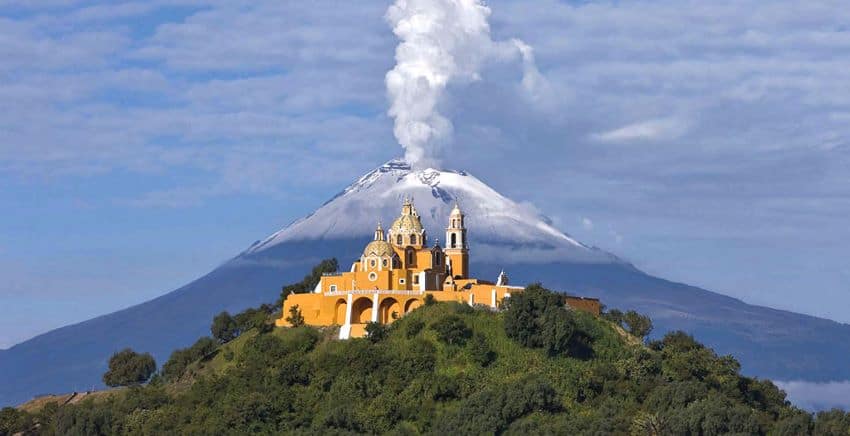
How to get there from CDMX: Take an ADO bus from TAPO or an Ebus from the Torre del Angel stop to Puebla, then taxi 20 minutes to Cholula. Driving directly takes about 2 hours.
Why you should go: Cholula’s Day of the Dead celebration is a lively one, featuring plenty of vibrant altars, illuminated church processions and colorful street celebrations with volcano views — plus festive tram rides through the charming town.
Bethany Platanella is a travel planner and lifestyle writer based in Mexico City. She lives for the dopamine hit that comes directly after booking a plane ticket, exploring local markets, practicing yoga and munching on fresh tortillas. Sign up to receive her Sunday Love Letters to your inbox, peruse her blog or follow her on Instagram.
